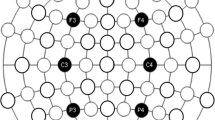Abstract
Gravity-induced loss of consciousness (G-LOC) is caused by loss of cerebral blood flow during high +Gz (head-to-foot inertial forces). The resistance of the jugular vein is a significant factor in decrease in cerebral blood flow. Ultrasonography of thoracic inlet veins, including internal jugular vein, is feasible to visualize the internal jugular vein and hemodynamic information. Anti-gravity straining maneuver (AGSM) was widely recognized as one of the important factors in preventing G-LOC. The purpose of this study was to evaluate the relationship between the ultrasonographic shape and size of internal jugular vein during AGSM and G-LOC. 47 trainee pilots who participated in human centrifuge education program were enrolled. They were all men, and their mean age was 23.9 ± 1.38 years. Questionnaire sheets were used to collect information about well-being sensation, smoking, drinking, height, and weight. Using ultrasonography, we monitored shape and size of internal jugular vein during AGSM. After ultrasonographic examination, 47 subjects underwent human centrifuge on the same day. The protocol of human centrifuge training was maximal 6G with sustaining time of 30 s. G-LOC occurred to ten out of 47 subjects in human centrifuge. To find presumptive variable associated with G-LOC, we performed logistic regression analysis. Concave contour and smaller cross-sectional area of internal jugular vein during AGSM were associated with G-LOC.



Similar content being viewed by others
References
Benni PB, Li JK, Chen B, Cammarota J, Amory DW (2003) NIRS monitoring of pilots subjected to +Gz acceleration and G-induced loss of consciousness (G-LOC). Adv Exp Med Biol 530:371–379
Cammarota JP, Whinnery JE (1990) Enhancing aircrew centrifuge high-G training using on-line videotape documentation. Aviat Space Environ Med 61:1153–1155
Chen HH, Wu YC, Kuo MD (2004) An electromyographic assessment of the anti-G straining maneuver. Aviat Space Environ Med 75:162–167
Cirovic S, Walsh C, Fraser WD (2000) A mathematical model of cerebral perfusion subjected to Gz acceleration. Aviat Space Environ Med 71:514–521
Cirovic S, Walsh C, Fraser WD (2001) A mechanical model of cerebral circulation during sustained acceleration. Aviat Space Environ Med 72:704–712
Cirovic S, Walsh C, Fraser WD, Gulino A (2003) The effect of posture and positive pressure breathing on the hemodynamics of the internal jugular vein. Aviat Space Environ Med 74:125–131
Falk RL, Smith DF (1987) Thrombosis of upper extremity thoracic inlet veins: diagnosis with duplex Doppler sonography. Am J Roentgenol 149:677–682
Kurihara K, Kikukawa A, Kobayashi A, Nakadate T (2007) Frontal cortical oxygenation changes during gravity-induced loss of consciousness in humans: a near-infrared spatially resolved spectroscopic study. J Appl Physiol 103:1326–1331
Lyons TJ, Marlowe BL, Michaud VJ, McGowan DJ (1997) Assessment of the anti-G straining maneuver (AGSM) skill performance and reinforcement program. Aviat Space Environ Med 68:322–324
MacDougall JD, McKelvie RS, Moroz DE, Moroz JS, Buick F (1993) The effects of variations in the anti-G straining maneuver on blood pressure at +Gz acceleration. Aviat Space Environ Med 64:126–131
Patel MC, Berman LH, Moss HA, McPherson SJ (1999) Subclavian and internal jugular veins at Doppler US: abnormal cardiac pulsatility and respiratory phasicity as a predictor of complete central occlusion. Radiology 211:579–583
Werchan PM, Schadt JC, Fanton JW, Laughlin MH (1996) Total and regional cerebral blood flow during recovery from G-LOC. Aviat Space Environ Med 67:751–758
Author information
Authors and Affiliations
Corresponding author
Additional information
Communicated by Guido Ferretti.
Rights and permissions
About this article
Cite this article
Choi, H.S., Sul, J.G., Yi, K.S. et al. Ultrasonographic finding of internal jugular vein during anti-G straining maneuver: is it associated with gravity-induced loss of consciousness?. Eur J Appl Physiol 109, 625–630 (2010). https://doi.org/10.1007/s00421-010-1401-2
Accepted:
Published:
Issue Date:
DOI: https://doi.org/10.1007/s00421-010-1401-2




